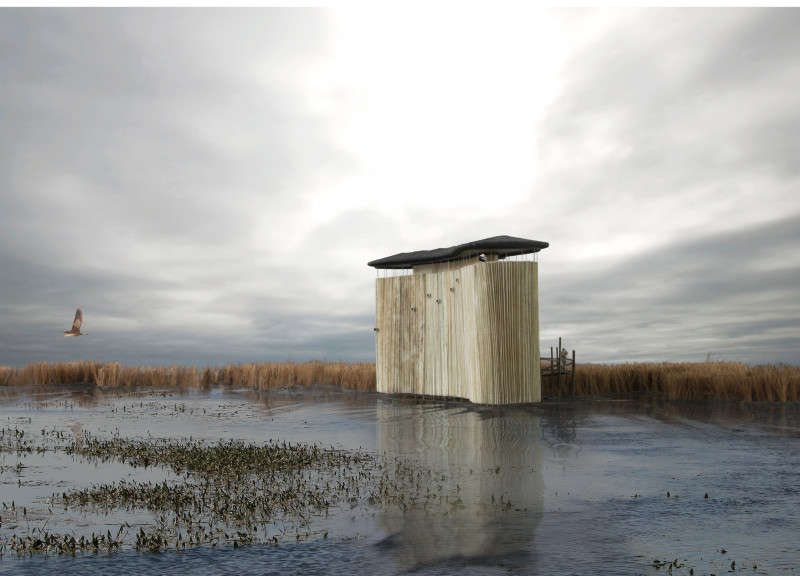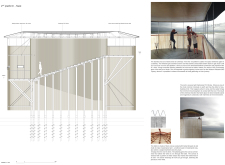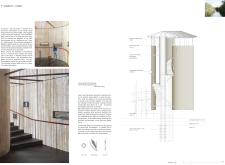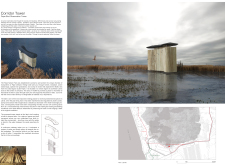5 key facts about this project
## Pape Bird Observation Tower Overview
Situated on the southern bank of Lake Pape in Latvia, the Pape Bird Observation Tower integrates architectural design with ecological consideration. The structure functions as both a vantage point for birdwatchers and an educational resource, enhancing public understanding of the region's rich biodiversity. The design responds to the unique ecological context, encouraging interaction between visitors and the natural environment while supporting conservation efforts.
### Spatial Configuration and User Engagement
The tower features a tiered series of platforms connected by a central stairway, facilitating varied experiences based on elevation. The ground-level "Cabin" platform offers intimate views of the wetland, with translucent fabric walls that provide natural light and privacy. Ascending platforms expand the visitor's perspective and foster social interactions, with the uppermost platform designed for active engagement with the surrounding landscape. The dynamic stairway serves as both circulation and a visual connector, guiding visitors through diverse sightlines.
### Material Selection and Environmental Integration
Materials have been chosen to reflect local geological characteristics and to promote sustainable practices. Primary structural components include wood for its aesthetic warmth and environmental compatibility, waterproof fabric for functional aesthetics, and steel for structural support. A noteworthy feature is the use of Dricolor FR Olivine for the roof, a material recognized for its capacity to absorb CO2, underscoring the project's sustainable intent. Additionally, a footbridge extends from the observation tower into the landscape, enhancing connectivity with the natural habitat and inviting visitors to explore beyond the observation point.
The architectural elements are carefully designed to resonate with the local ecological patterns, drawing inspiration from the area's water flow and wildlife dynamics. This thoughtful approach creates a meaningful dialogue between the structure and its environment, reinforcing the commitment to ecological sensitivity throughout the design.






















































